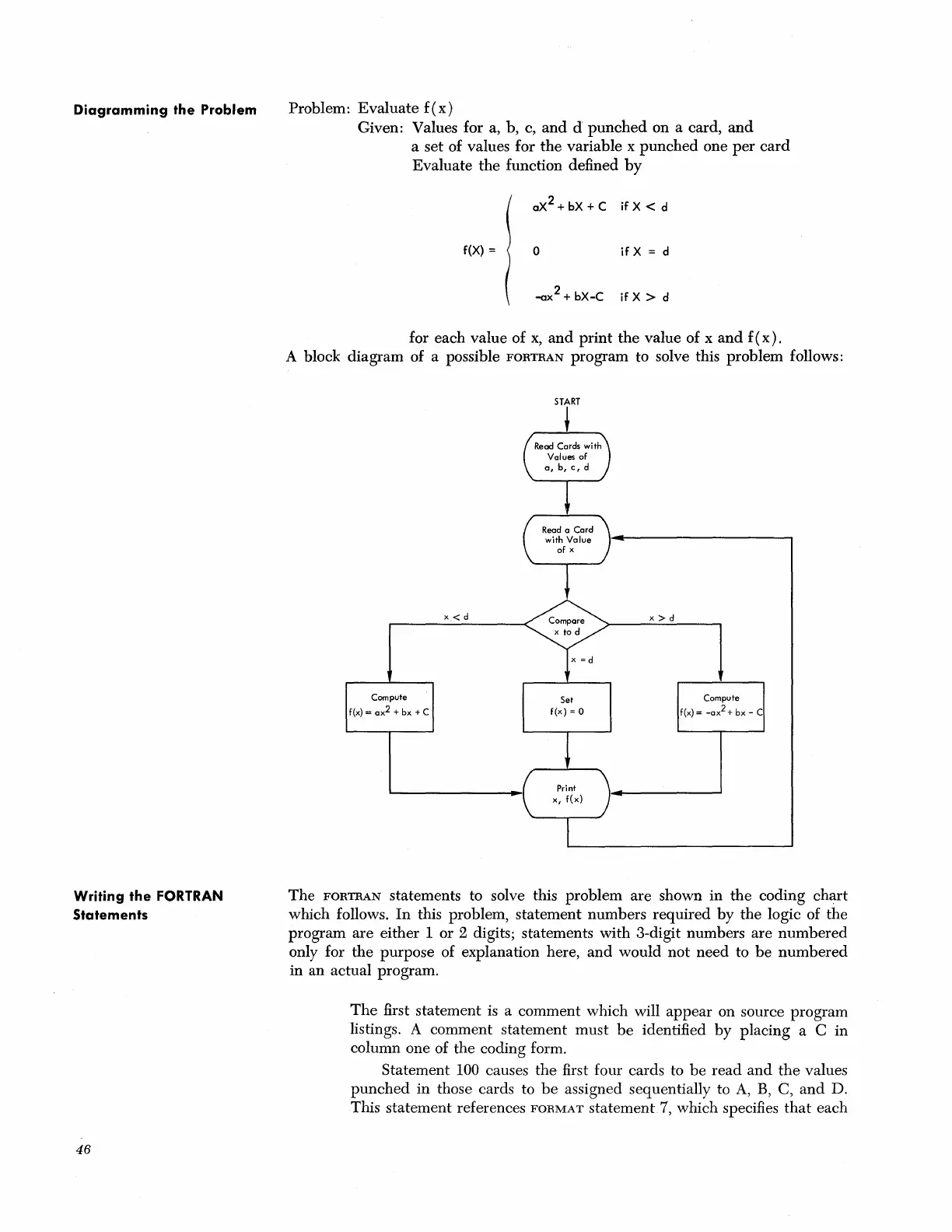Diagramming
the Problem
Writing the FORTRAN
Statements
46
Problem:
Evaluate
f(x)
Given: Values for a, b, c,
and
d
punched
on a card,
and
a
set
of values for
the
variable x
punched
one
per
card
Evaluate
the
function defined
by
aX2 + bX + C if X < d
f(X) =
o
if
X = d
-ax
2
+ bX
-C
if X > d
for each value of
x,
and
print
the
value of x
and
f ( x ) .
A block diagram of a possible
FORTRAN
program to solve this problem follows:
Compute
f(x) =
ax
2
+ bx + C
x.< d
Set
f(x)
= 0
x>d
Compute
f(x) =
_ax
2
+
bx
- C
The
FORTRAN
statements to solve this problem
are
shown in
the
coding
chart
which follows.
In
this problem,
statement
numbers required
by
the
logic of the
program
are
either 1 or 2 digits; statements
with
3-digit numbers are
numbered
only for
the
purpose
of explanation here,
and
would
not
need
to
be
numbered
in an actual program.
The
first statement is a comment which will
appear
on source program
listings. A comment statement
must
be
identified
by
placing a C in
column one of the coding form.
Statement 100 causes
the
first four cards to
be
read
and
the
values
punched
in those cards to
be
assigned sequentially to
A,
B,
C,
and
D.
This statement references
FORMAT
statement
7,
which specifies
that
each
